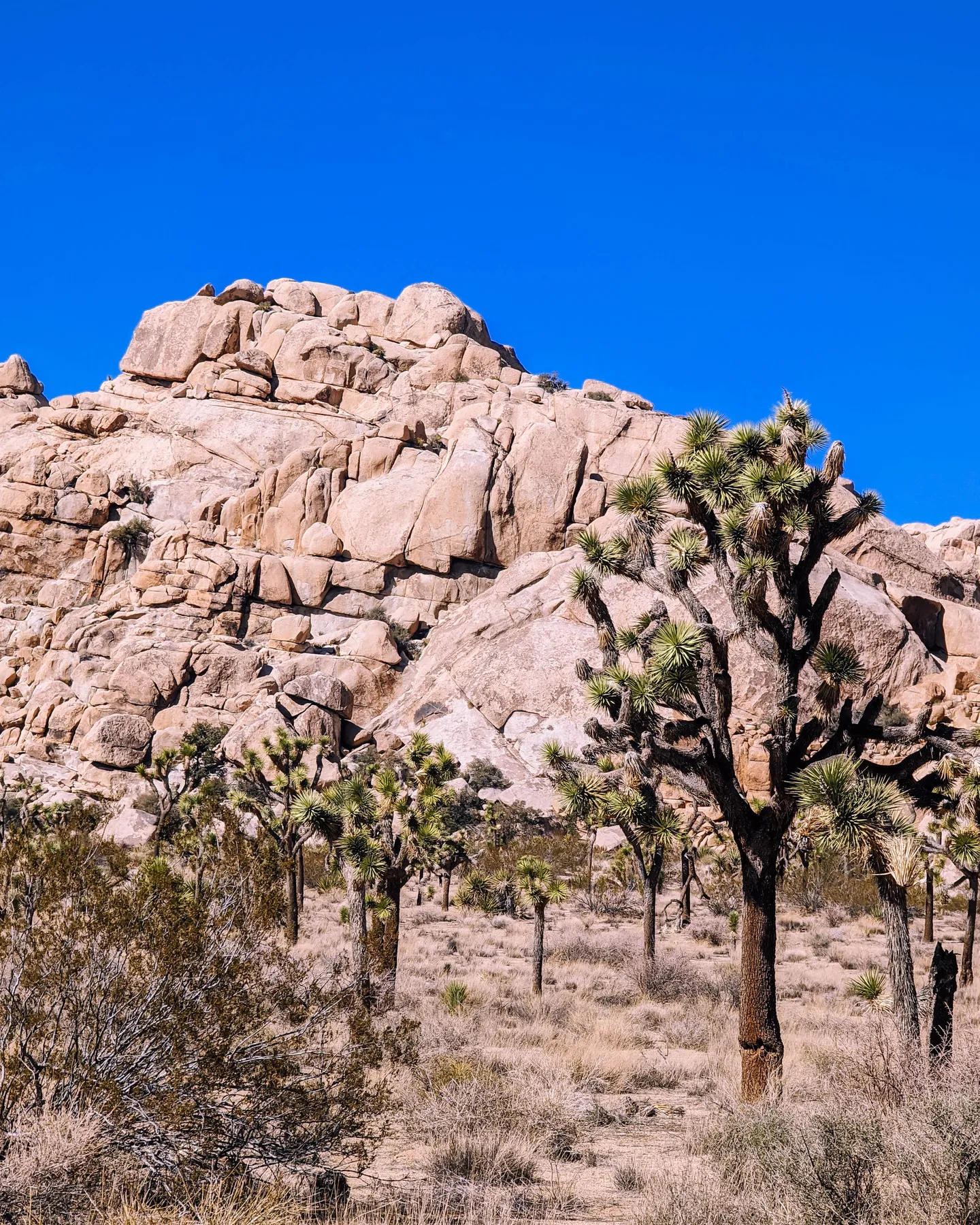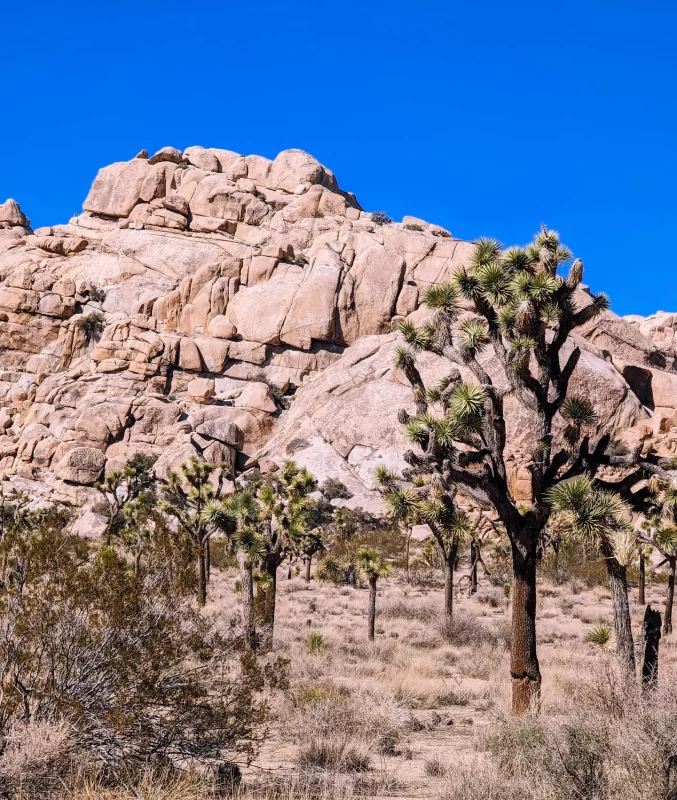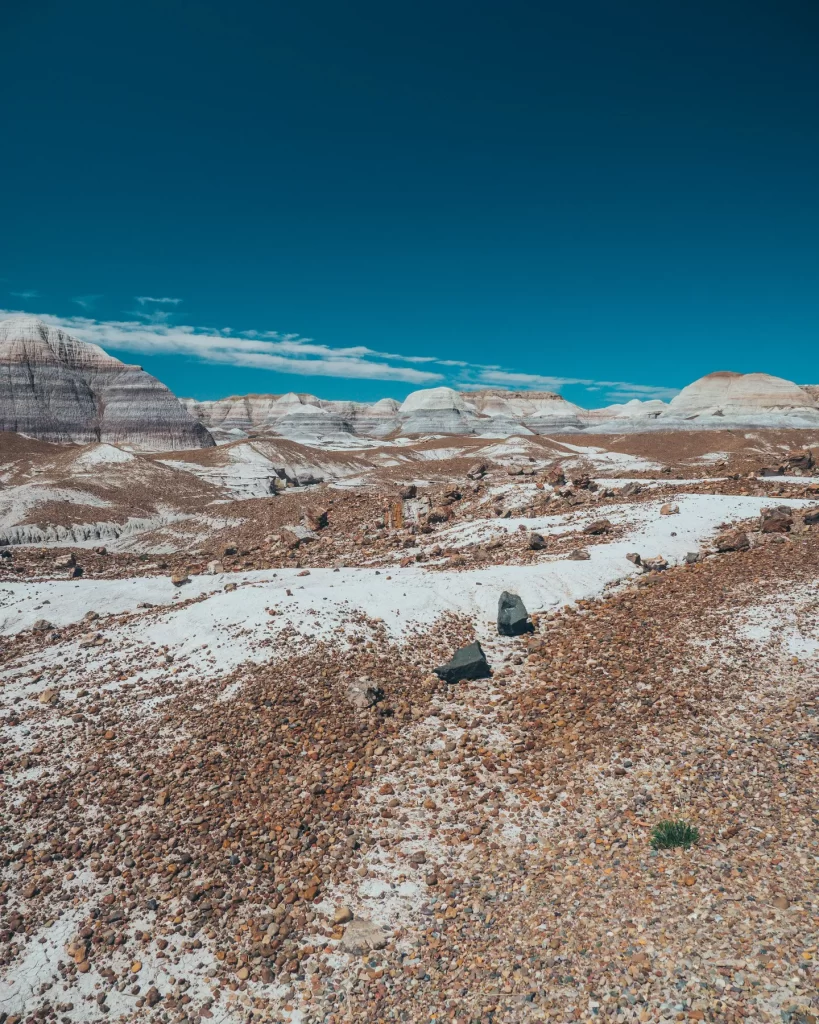“Wilderness is not a luxury but a necessity of the human spirit.“
Edward Abbey
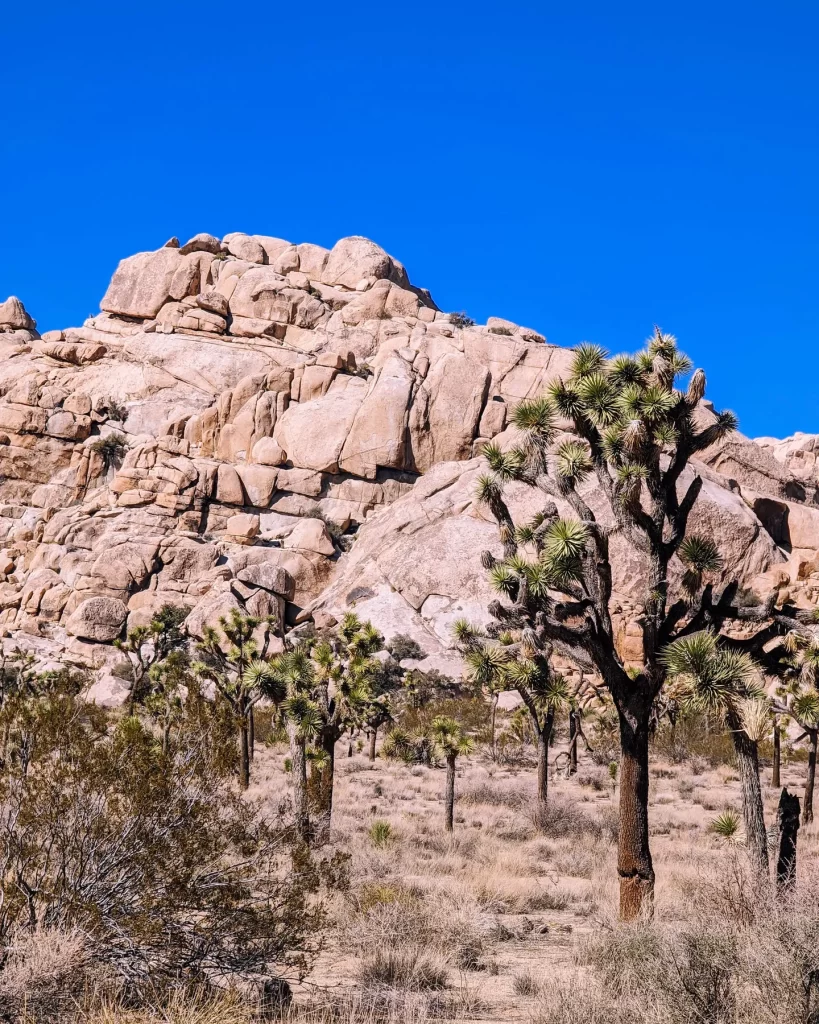
Joshua Tree National Park is a wilderness unlike any other. Located in Southern California, this vast and stunning park covers over 790,000 acres of stunning desert landscapes, rock formations, and fascinating wildlife. Founded in 1936, the park was named after the unique Joshua Tree that grows throughout the area. The park’s striking natural beauty has inspired artists, adventurers, and outdoor enthusiasts for generations.
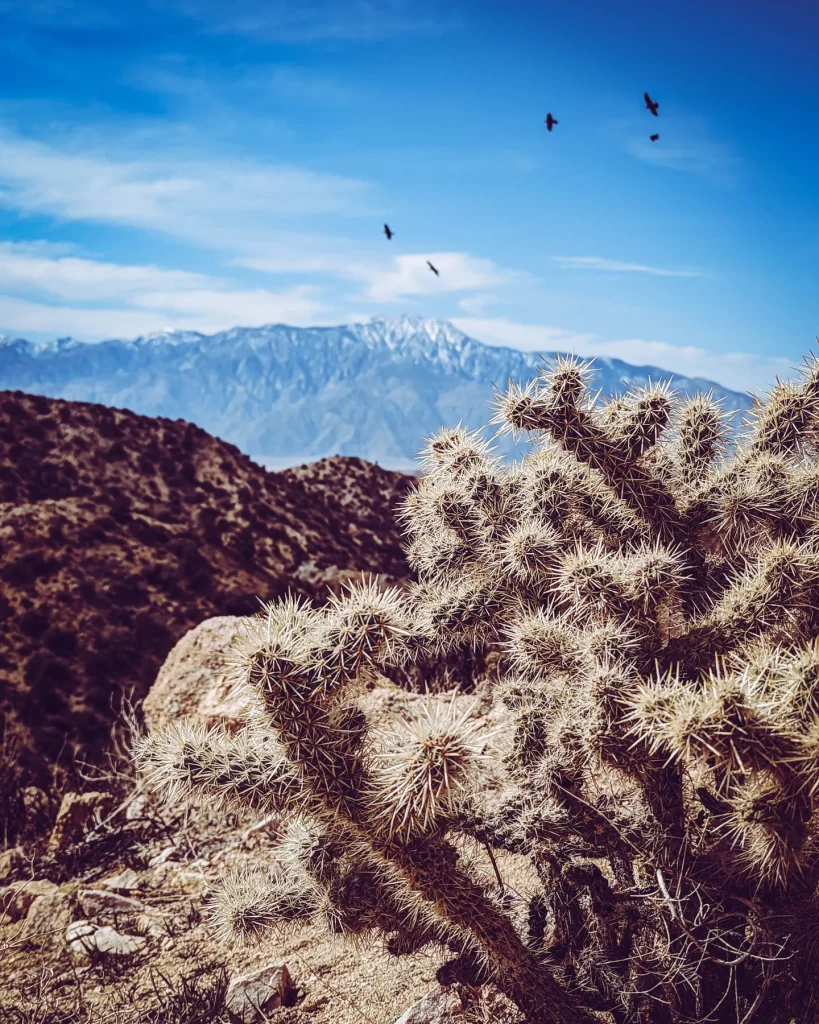
How to Get To Joshua Tree National Park
If you’re planning a trip to Joshua Tree National Park, the first thing you’ll need to know is how to get there. Here are some directions from nearby cities:
From Los Angeles: Take the I-10 E to the CA-62 exit towards 29 Palms/Yucca Valley. Continue on CA-62 for approximately 30 miles until you reach the park’s West Entrance.
From San Diego: Take the I-15 N to the CA-79 N exit towards Indio. Follow CA-79 N until it merges onto CA-371 E, then continue on CA-371 E until it becomes CA-74 E. Follow CA-74 E to Palm Desert, then take the exit for CA-111 N towards Palm Springs. From there, take the exit for the I-10 E and follow the directions above.
From Las Vegas: Take the I-15 S to the CA-62 exit towards Yucca Valley. Continue on CA-62 for approximately 30 miles until you reach the park’s West Entrance.
No matter where you’re coming from, it’s important to plan your route ahead of time and be aware of any road closures or construction. Once you’ve arrived at the park, you’ll need to pay an entrance fee of $30 per vehicle or $25 per motorcycle. If you plan to visit multiple national parks throughout the year, it may be worth investing in an America the Beautiful pass for $80, which provides access to all federal recreation lands for one year.
Overall, getting to Joshua Tree National Park is relatively easy, and the scenic drive is part of the adventure. Just be sure to check the weather and road conditions before you go and plan your route accordingly.
Hiking in Joshua Tree National Park
One of the main draws of Joshua Tree National Park is its incredible hiking trails. There are over 300 miles of trails to explore, ranging from easy nature walks to challenging backcountry treks. Here are some of the best hikes in the park, along with their difficulty level, trail length, and notable features:
My Favorite Hikes
- Ryan Mountain – Difficult – 3 miles round trip – This popular trail offers stunning views of the surrounding landscape from the summit of Ryan Mountain. The trail is steep and rocky, but the reward is well worth the effort.
- Lost Palms Oasis – Moderate – 7.2 miles round trip – This trail takes hikers through a scenic canyon to a hidden oasis of palm trees. Along the way, you’ll enjoy stunning views of the park’s rugged terrain and unique rock formations.
- Barker Dam – Easy – 1.3 miles round trip – This short, family-friendly trail takes hikers to a historic dam built by early ranchers. Along the way, you’ll see petroglyphs and stunning views of the surrounding desert landscape.
- Boy Scout Trail – Strenuous – 16 miles round trip – This backcountry trail takes hikers through some of the park’s most remote and rugged terrain. It’s not for the faint of heart, but those who make the trek will be rewarded with stunning vistas and a true wilderness experience.
- Hidden Valley – Easy – 1 mile round trip – This short loop trail takes hikers through a secluded valley surrounded by towering rock formations. It’s a great spot for families and those looking for a quick nature walk.
These are just a few of the many hiking trails available in Joshua Tree National Park. When planning your hikes, be sure to bring plenty of water, sunscreen, and appropriate footwear. It’s also a good idea to check with park rangers about trail conditions and any potential hazards. With so many trails to choose from, there’s something for hikers of all levels and interests in Joshua Tree National Park.
Lodging and Camping Options in Joshua Tree National Park
There are several options for lodging and camping in and around Joshua Tree National Park. Here are some of the most popular options:
- Camping in the Park – Joshua Tree National Park offers nine campgrounds, each with its own unique features and amenities. Some campgrounds are first-come, first-served, while others can be reserved in advance. Most campgrounds offer basic amenities such as picnic tables, fire pits, and restrooms, but there are also a few campgrounds with RV hookups and showers.
- Backcountry Camping – For those looking for a true wilderness experience, backcountry camping is allowed in certain areas of the park. Permits are required, and hikers must follow Leave No Trace principles and stay on designated trails.
- Hotels and Motels – There are several hotels and motels located just outside the park’s entrance, offering easy access to the park’s hiking trails and other attractions. Some popular options include the Harmony Motel, the Joshua Tree Inn, and the 29 Palms Inn.
- Vacation Rentals – For those looking for more privacy and space, vacation rentals are a great option. There are several rental properties located near the park’s entrance, ranging from cozy cabins to luxurious villas.
No matter what type of lodging you choose, be sure to book well in advance, especially during peak season (October through May). Additionally, be aware that temperatures can drop significantly at night, so be sure to bring warm layers and a good sleeping bag if camping.
Top Things to Do in Joshua Tree National Park
While hiking is undoubtedly the main attraction at Joshua Tree National Park, there are plenty of other activities to enjoy as well. Here are some of the top things to do in the park:
- Rock Climbing – With over 8,000 climbing routes, Joshua Tree is a mecca for rock climbers. There are routes for climbers of all levels, and the park offers stunning views of the surrounding desert landscape.
- Stargazing – Joshua Tree National Park is known for its dark skies, making it a popular destination for stargazers. The park offers several designated stargazing areas, and rangers often lead night sky programs.
- Ranger-Led Programs – Speaking of ranger-led programs, the park offers a variety of guided hikes, talks, and workshops. Topics range from wildlife to geology to history, and programs are available for all ages.
- Nature Walks – For those looking for a more leisurely hike, there are several nature trails throughout the park. These trails are short and easy, and offer a chance to see the park’s unique flora and fauna up close.
- Photography – Joshua Tree’s unique landscape and stunning rock formations make it a photographer’s paradise. There are several iconic spots for photography, including the Cholla Cactus Garden, Jumbo Rocks, and Skull Rock.
- Birdwatching – Joshua Tree is home to over 250 species of birds, making it a popular destination for birdwatchers. Some of the most common birds in the park include the roadrunner, the phainopepla, and the cactus wren.
These are just a few of the many things to do in Joshua Tree National Park. Be sure to check with the park’s visitor center for a full list of activities and programs, and to get the most out of your visit to this unique and beautiful destination.
Weather in Joshua Tree National Park
One of the most important things to consider when planning a trip to Joshua Tree National Park is the weather. The park is located in the high desert of southern California, and the climate can be extreme, with temperature swings of over 40 degrees Fahrenheit in a single day.
Here’s a breakdown of the weather in Joshua Tree National Park by season:
- Spring (March-May): Spring is a popular time to visit the park, with mild temperatures and occasional rainfall. Daytime temperatures are typically in the 70s and 80s Fahrenheit, with nighttime temperatures in the 40s and 50s.
- Summer (June – August): Summer in Joshua Tree can be brutally hot, with daytime temperatures frequently exceeding 100 degrees Fahrenheit. Nighttime temperatures are still warm, typically in the 70s and 80s. If you do plan to visit in the summer, be sure to bring plenty of water and sun protection.
- Fall (September – November): Fall is another popular time to visit the park, with mild temperatures and low rainfall. Daytime temperatures are typically in the 70s and 80s, with nighttime temperatures in the 40s and 50s.
- Winter (December – February): Winter in Joshua Tree can be chilly, with daytime temperatures in the 50s and 60s Fahrenheit, and nighttime temperatures frequently dropping below freezing. Snow is rare, but it does occasionally occur at higher elevations in the park.
No matter when you plan to visit Joshua Tree National Park, be sure to check the weather forecast before you go, and bring appropriate clothing and gear to stay comfortable in the park’s often extreme conditions.
Wildlife to see in Joshua Tree National Park
Joshua Tree National Park is home to a variety of wildlife, including many species that are unique to the desert environment. Here are some of the animals you might encounter during your visit to the park:
- Desert Bighorn Sheep: These impressive animals are one of the park’s most iconic species. Look for them in rocky areas and along steep canyon walls.
- Coyotes: These adaptable predators are common throughout the park. They are most active at dawn and dusk, so keep an eye out during those times.
- Desert Tortoise: The desert tortoise is a threatened species, and seeing one in the wild is a rare treat. They are most active in the spring and fall, and can often be found near rocky outcroppings and in washes.
- Black-tailed Jackrabbit: These speedy hares are a common sight in the park’s open desert areas. They are most active at night, but can sometimes be seen during the day as well.
- Kangaroo Rat: These small, adorable rodents are nocturnal, and are often seen darting across the desert floor at night.
- Rattlesnakes: Joshua Tree National Park is home to several species of rattlesnake, including the western diamondback and the Mojave rattlesnake. Be careful when hiking, and watch where you step.
Remember, when encountering wildlife in Joshua Tree National Park, it’s important to keep a safe distance and not disturb the animals. Do not attempt to feed or approach any wildlife, and be sure to store your food and trash securely to avoid attracting animals to your campsite.
Best Places to Take Photos in Joshua Tree National Park
With its stunning rock formations, desert landscapes, and breathtaking sunsets, Joshua Tree National Park is a photographer’s paradise. Here are some of the best places in the park to capture stunning photos:
- Keys View: Located at an elevation of over 5,000 feet, Keys View offers panoramic views of the Coachella Valley and San Jacinto Peak. This is a great place to capture sunrise or sunset photos.
- Cholla Cactus Garden: This area of the park is home to thousands of cholla cacti, which create a stunning, otherworldly landscape. The best time to photograph the cholla cacti is in the early morning or late afternoon, when the light is soft and the shadows are long.
- Barker Dam: This historic dam was built by early settlers in the area, and is now a popular spot for hiking and photography. The area around the dam is home to several large boulder formations, which make for great photo opportunities.
- Skull Rock: This iconic rock formation looks like a skull, and is one of the most popular photo spots in the park. It’s located just off the road, so it’s easy to access.
- Arch Rock: This natural arch is another popular photo spot in the park. It’s located near the White Tank Campground, and is especially beautiful at sunrise or sunset.
- Ryan Mountain: For a more challenging hike and incredible panoramic views, hike Ryan Mountain. This is a moderate 3-mile round-trip hike, with a 1,000-foot elevation gain, and provides stunning views of the surrounding mountains.
Things to Remember
Remember to be respectful of the park and other visitors when taking photos. Stay on designated trails and do not disturb any plants or wildlife. And don’t forget to bring plenty of water and sunscreen, as the desert sun can be intense.
These are just a few of the many things to do in Joshua Tree National Park. Be sure to check with the park’s visitor center for a full list of activities and programs, and to get the most out of your visit to this unique and beautiful destination.
Things to Do Near Joshua Tree National Park
While Joshua Tree National Park is a popular destination in its own right, there are plenty of other things to do in the area if you have extra time. Here are some nearby attractions and activities to consider:
My Top Activities near Joshua Tree National Park
- Integratron: This unique dome-shaped structure in nearby Landers is said to have healing and rejuvenating properties. Visitors can take a sound bath inside the Integratron and experience the powerful vibrations of quartz crystal singing bowls.
- Palm Springs Aerial Tramway: Take a break from the desert heat and take a ride on the Palm Springs Aerial Tramway, which takes visitors up 8,516 feet to the top of Mt. San Jacinto. From the top, you can enjoy stunning views of the Coachella Valley and the surrounding mountains.
- Pioneertown: This historic western town was built in the 1940s as a movie set, and is now a popular destination for visitors looking for a taste of the Old West. Visitors can watch reenactments of shootouts, take a horseback ride, or enjoy a meal at the famous Pappy and Harriet’s restaurant.
- Salton Sea: This large, shallow lake located south of Joshua Tree National Park is a popular destination for birdwatchers and nature lovers. The lake is home to a variety of migratory birds and other wildlife, and offers opportunities for boating, fishing, and hiking.
- Anza-Borrego Desert State Park: Located about two hours south of Joshua Tree National Park, Anza-Borrego is the largest state park in California and offers miles of hiking trails, stunning desert landscapes, and fascinating wildlife.
- Coachella Valley Music and Arts Festival: If you happen to be visiting during the spring, consider attending the Coachella Valley Music and Arts Festival, one of the largest and most popular music festivals in the world. The festival is held in nearby Indio and features performances by top musicians and artists.
These are just a few of the many attractions and activities in the area. Whether you’re interested in history, nature, or music, there’s something for everyone near Joshua Tree National Park.
Wrapping Up Joshua Tree National Park
Joshua Tree National Park is truly a remarkable destination for hiking enthusiasts, nature lovers, and adventurers of all kinds. With its stunning rock formations, rugged desert landscapes, and fascinating wildlife, the park offers a unique and unforgettable experience for visitors.
Whether you’re looking for an easy day hike or a challenging backpacking trip, Joshua Tree has something for everyone. And with a variety of lodging and camping options, it’s easy to make the most of your time in the park.
But Joshua Tree isn’t just about hiking – there are plenty of other things to see and do in the area, from exploring historic western towns to taking a sound bath in a mysterious dome.
So why not plan your visit to Joshua Tree National Park today? Whether you’re a seasoned hiker or just looking for a new adventure, you’re sure to be inspired and awed by the beauty and wonder of this remarkable park.
Joshua Tree National Park Resources
- Joshua Tree National Park official website: https://www.nps.gov/jotr/index.htm
- National Park Service guide to hiking in Joshua Tree: https://www.nps.gov/jotr/planyourvisit/hiking.htm
- Visit California guide to Joshua Tree National Park: https://www.visitcalifornia.com/attraction/joshua-tree-national-park
Check Out My Socials
TL;DR
Get More Info
Get more info from the source at https://www.nps.gov/grca/index.htm
Check out my other nearby blog reviews of Utah!

